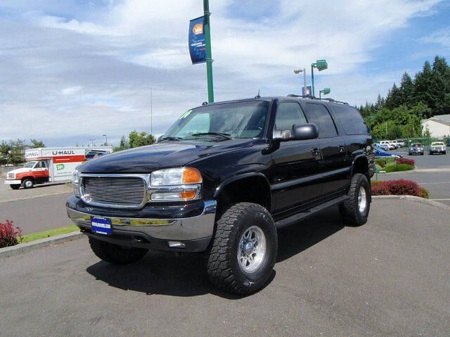Piston Slap: Losing Lifeblood in Yukon Territory

Northyadams writes:
I have a 2004 GMC Yukon XL that’s developed a coolant leak that three shops can’t identify. Someone mentioned something about it on here. Does anyone have any more info—is this another GM problem?
Sajeev answers:
Much like the awful Cadillac HT4100 family of engines, I’ve heard that GM recommended the use of a stop leak for some LS-series engines. The Internet is full of reasons why, but I cannot verify. Considering the 5.3L’s infamous connection to the title of this TTAC series, no reason for your coolant leak surprises me.
If the shops used dye and never found a leak with a black light, you might be burning coolant. I’d pull the spark plugs and look for white or brown-ish deposits. I can’t think of anything else: if the heater core was leaking you’d either see it or smell it.
Back to you, Best and Brightest.
[Send your electro-mechano-technical queries to sajeev.mehta@thetruthaboutcars.com]

More by Sajeev Mehta


































Comments
Join the conversation
@big_gms Since you have had relitively few problems with a very similar truck I am interested in your experince. (my 350 is a Vortec, though) Since it has been awhile since your last coolant flush, and since it seems like you have had it awhile (since new?) I would be interested in how your coolant looks. Take the cap off of the radiator. Is the cap clean or does it have a sticky orange rust coating on the inside of it? Peer into the radiator with a flashlight. Does the coolant look like clear orange fluid, or like orange mud? If it is clear, can you see any orange crud on the inside of the radiator or is it clean? If you decide to flush the system since it has been awhile, I would be interested in your impression of the coolants condition after you drain it out. Does it look like a 5 year/ 150,000 mile product to you? Just remember to collect the old coolant and bring it to your local hazardous waste drop off. Any coolant is a nasty pollutant that you dont want lingering in your front yard.
Why the switch from green in the first place? All of our high mileage cars have had water pumps that have lasted for what seems like a reasonable life. In a way it was ironic that some of our Japanese vehicles never got to be much of a test bead since I changed the pump with the timing belt service - something that most professional wrenches suggest as well. Anyway, since no coolant seems to be safe to use for 5 years, and they all are toxic to some degree, why not just keep the original? We were burned by the dreaded Dex and nothing I own will ever have that crap in it.
How many miles on your Yukon? Are you running Dex Cool? Is it the green stuff? Or worse, did you switch from Dex Cool to green or vice versa somewhere along the line? Or even worse, did you put any of those nasty Euro/Asian "rust inhibitor" additives?
@npbheights Correction: I had a new radiator installed about a year ago; the old one was physically damaged, which had nothing to do with Dexcool. So some new coolant was actually put in, come to think of it. Suffice it to say, it went at least four and a half years prior to that with the same old coolant, and I have no idea when-or even if-the previous owner had it flushed. I bought the truck in 2003. At that time it had 83,000 miles, it now has 121,000. The current radiator looks clean inside, as you would expect, and the coolant looks relatively clear. The old radiator did have a little crud in it, but the coolant didn't look at all like orange mud...just ever so slightly murky, that's all. It really didn't look any worse than green coolant I've seen in any of my old cars (I have in fact seen green antifreeze and radiators with it that have looked worse). There was a trace amount of rust colored sticky residue on the underside of the cap, but nothing I'd consider all that unusual. The coolant recovery tank has never had any rusty looking residue. I have noticed, however, that if I have a small leak, like I did from the recovery tank once, it leaves behind a sticky whitish-orange residue. Green coolant leaves a residue too, but not as sticky as this stuff. I can't help but wonder if some of the issues with Dexcool are caused by people mixing in other types of antifreeze because they simply don't know any better. There are universal types of antifreeze now, which manufacturers claim will mix with any type, but I don't know how good they are. My truck has warning labels to only add Dexcool, and I can only assume every other vehicle using it is so labeled, but some people aren't too good at reading warning labels. I also wonder if people are adding rust inhibitors and other additives...perhaps some of these products don't agree with Dexcool? I don't know. Personally, I never use them. Then too, like I posted before, some engines seem mostly okay with it (mine), while others aren't; I've read many, many complaints about it when used in the 4.3 liter Vortec V6, for example. There are a lot of variables to consider.